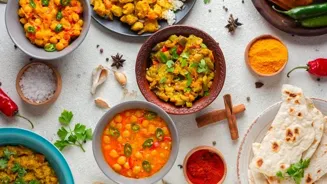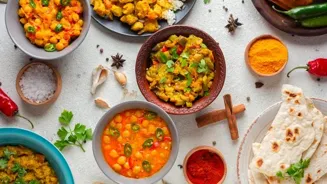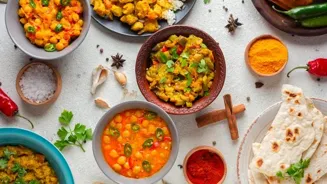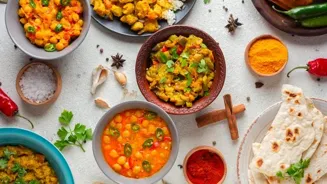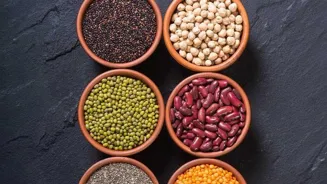Unlock the secrets of perfect Indian cooking! Learn how to fix common blunders and elevate your dishes. Dive in now!
Indian cuisine, with its tapestry of flavors and aromatic spices, is a culinary adventure.
But sometimes, even the most seasoned home cook can fall prey to common pitfalls that prevent a dish from reaching its full potential. Worry not, fellow food lovers!
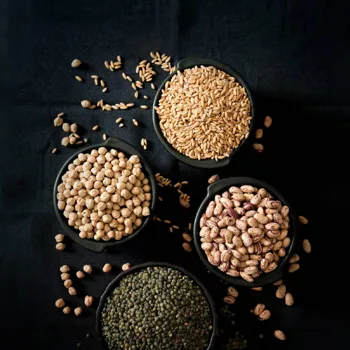
We're here to shed light on five frequent Indian cooking "mistakes" and equip you with simple solutions to elevate your culinary game. These are not true "mistakes" per se, but rather areas where attention to detail can significantly enhance the final dish.
Think of it as leveling up your cooking, from good to simply amazing.
Bloom spices gently to avoid bitterness and unlock true flavors
First up, the "Spice Shock": ever added spices directly to hot oil and ended up with a bitter, burnt taste? This happens when sensitive spices like coriander or cumin are exposed to intense heat for too long. The fix? Bloom your spices gently.
Heat your oil on medium-low, add your whole spices first (like cardamom or cinnamon), allowing them to release their aroma. Then, introduce powdered spices gradually, stirring constantly for a minute or two, before adding your base ingredients like onions or tomatoes.
This gentle blooming unlocks the spices' true flavor profile without scorching them. Think of it as waking them up slowly, allowing them to fully express their essence in your dish. Another related problem is using stale spices. Spices lose their potency over time.
If your spices have been sitting in your pantry for ages, they likely won't deliver the vibrant flavor you're expecting. Invest in fresh spices whenever possible and store them properly in airtight containers away from heat and light.
This simple act can make a world of difference in the depth and complexity of your dishes. Your dishes will be amazing.
Cook onions patiently for rich, flavorful Indian dishes
Next, the dreaded "Onion Overdose" (or rather, under-cooking): those raw, crunchy bits that ruin the texture of an otherwise perfect curry. Patience is key here. Indian cooking often relies on deeply caramelized onions to form the foundation of a flavorful gravy.
Cook your onions on medium-low heat, stirring frequently, until they turn a deep golden brown. This process, which can take 15-20 minutes, releases the onions' natural sugars and creates a sweet, savory base that is the foundation of your recipe.
Also, cutting the onion correctly makes a big difference. Uniformly diced onions cook evenly. So, take that little extra time to make sure each piece is of similar size. A quick tip: add a pinch of salt to the onions early in the cooking process.
This helps to draw out moisture and accelerates the browning process. Your patience will be rewarded with a richer, more satisfying final plate. No more raw onions in your dishes! They will be cooked perfectly.
Cook lentils right: avoid undercooked or mushy dal disasters
The third culprit: "Dal Disasters": undercooked lentils that remain stubbornly hard, or overcooked ones that turn to mush. Each dal variety has a specific cooking time. Some, like moong dal, cook quickly, while others, like chana dal, require more time and soaking.
Always read the recipe instructions carefully. Soaking the dal before cooking is crucial for many varieties, as it reduces the cooking time and ensures that the lentils cook evenly. Use the right amount of water.
Too little water can lead to burning, while too much can result in a watery, flavorless result. The general rule of thumb is to use about 3 times the amount of water as dal. Use a pressure cooker for lentils which typically takes time to cook, as it reduces the cooking time.
It also saves a lot of energy. Cooking amazing dal is something everyone wants.
Use salt judiciously in cooking to avoid bland or salty dishes
Now, let's talk about "Salty Situations": adding salt haphazardly and ending up with a dish that is either bland or overly salty. Salt is a critical flavor-enhancer, but it needs to be used judiciously. Add salt in small increments throughout the cooking process, tasting as you go.

This allows you to adjust the seasoning to your liking and prevents over-salting. Remember that some ingredients, like tomatoes or tamarind paste, can intensify the perception of saltiness, so be mindful of these when seasoning your dishes.
Also, keep in mind that saltiness can be reduced if you add lemon juice or vegetables. Cooking with salt has to be done with care. This way you will have the best dishes.
Sprinkle garam masala at the end for best aroma, flavor
Finally, the "Garam Masala Gamble": sprinkling garam masala at the wrong time and losing its delicate aroma. Garam masala is a blend of warm spices that is typically added towards the end of the cooking process to retain its flavor.
Adding it too early can cause the spices to lose their potency and the dish to taste bitter. Sprinkle garam masala in the last few minutes of cooking, or even after the dish is finished, for a final burst of aroma and flavor. Buying good quality garam masala makes the whole difference.
Try different brands until you find the perfect one for your dishes. Do not add too much, because Garam Masala has strong flavors.
Avoid cooking mistakes, elevate Indian food. Experiment, have fun!
By avoiding these common cooking "mistakes" and embracing simple techniques, you can elevate your Indian food from good to amazing! Remember, cooking is a journey of learning and experimentation.
So, don't be afraid to try new things, adjust recipes to your liking, and most importantly, have fun in the kitchen. Happy cooking. So these are the 5 ways you can improve the cooking of Indian Foods.



